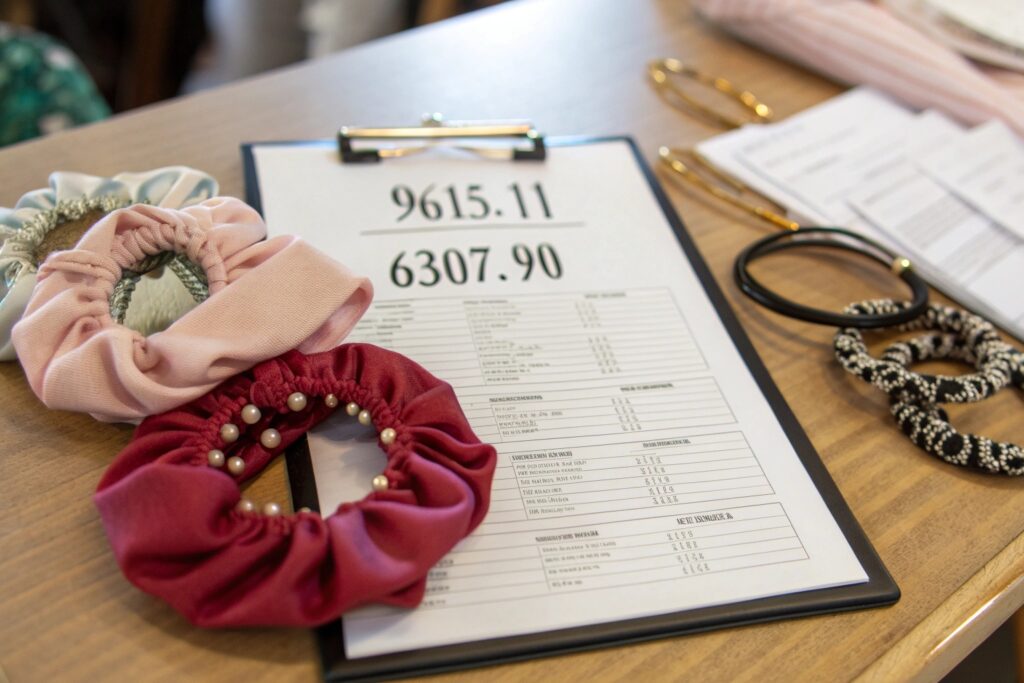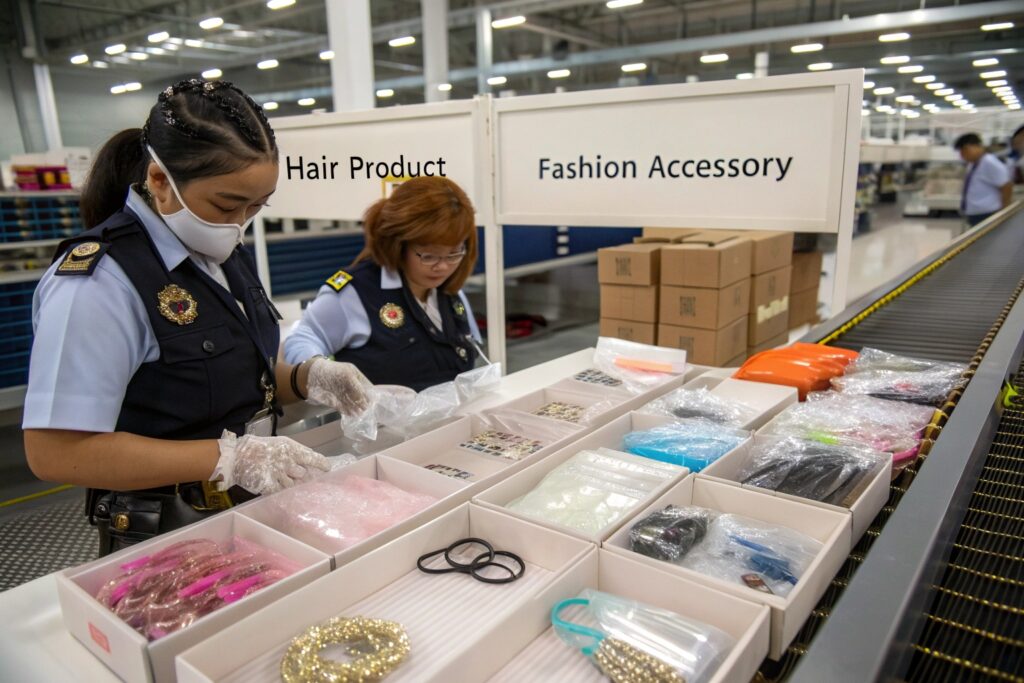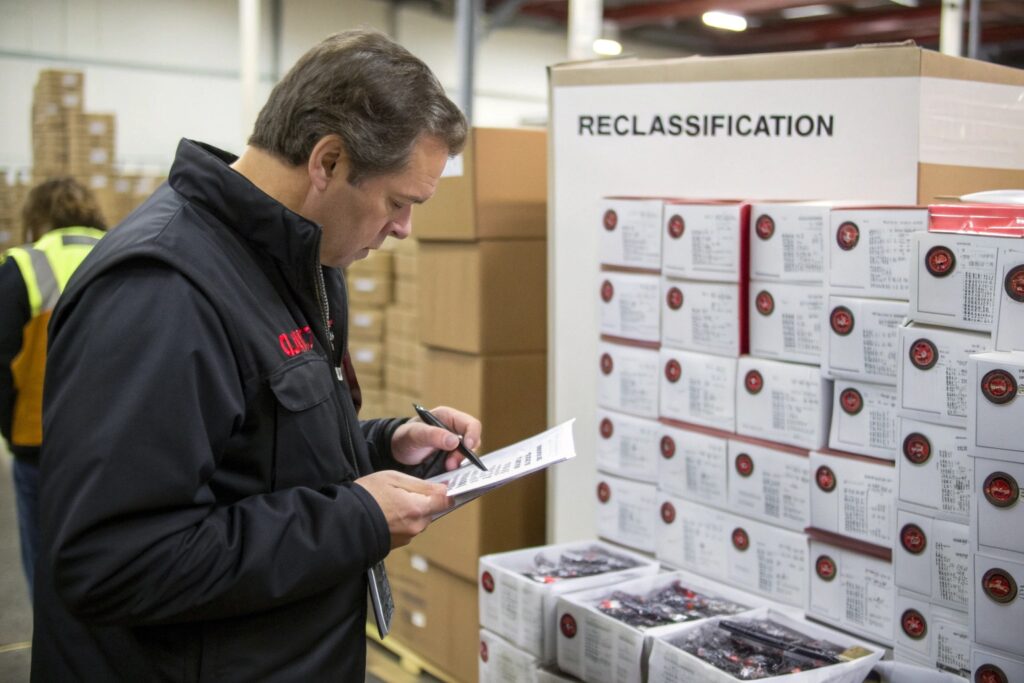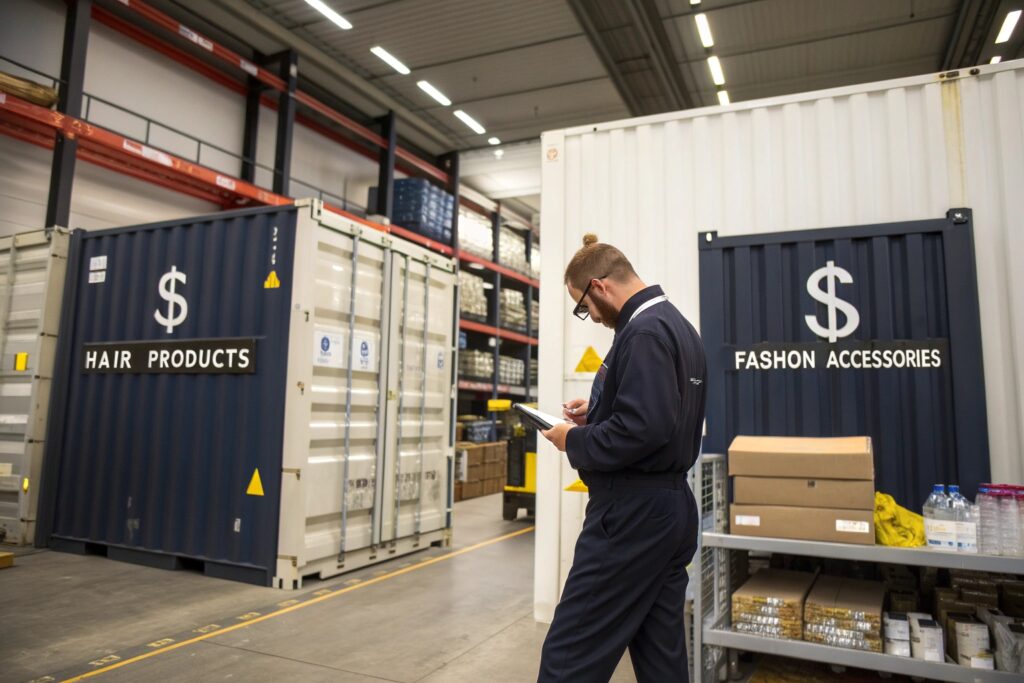If you’re importing hair accessories from China to the U.S. or Europe, you’ve likely faced the confusing dilemma: should these items be classified as hair products or fashion accessories? This one detail could mean the difference between paying a 0% duty or a 17.6% tariff under current trade conditions.
Tariff classification for hair products vs. fashion accessories has direct financial implications, as product category determines import duties, applicable HS codes, and eligibility for trade exemptions or penalties.
In this blog, I’ll break down the actual tariff impact, explain how classification can influence your bottom line, and share tactics we use at HairAcc to help clients minimize duties and avoid misclassification issues.
How Are Hair Accessories Classified Under HS Codes?
Understanding the correct Harmonized System (HS) code is essential when importing goods internationally.
Hair accessories fall under several possible HS codes depending on material and usage, each with different tariff rates and classification risks.

What HS Code Covers Plastic and Metal Hair Clips?
For items like claw clips, bobby pins, and barrettes made of plastic or metal, the typical classification is HS Code 9615.11 (combs, hair slides, and similar items). This category often attracts a moderate duty rate, currently around 2.6%-5.4% in the U.S. depending on country of origin.
You can verify these rates on official USITC HTS schedules or EU TARIC databases. Mislabeling these as general accessories could cause delays or penalties during inspection.
How About Fabric-Based Items Like Scrunchies or Headwraps?
Fabric hair accessories may fall under HS Code 6117.80 or 6307.90, depending on how customs views their primary function—fashion vs. utility. In the U.S., these may be treated as "other made-up textile articles" and taxed at up to 17.6%.
This ambiguity is a real risk. That’s why we advise clients to clearly specify material composition and end-use when submitting commercial invoices to customs.
What Are the Tariff Rates in Key Markets Like the US and EU?
Tariffs vary by country—and one misstep in documentation can add thousands to your import bill.
The United States and the European Union impose different tariff structures on hair products vs. fashion accessories, impacting cost strategies for importers.

What Is the Tariff Range for Hair Products Entering the US?
In the U.S., metal or plastic hair clips are often taxed between 2.6%-5.4%, while fabric-based accessories may face duties of up to 17.6%, especially post-Section 301 tariffs on Chinese goods. These surcharges are detailed on the Office of the United States Trade Representative (USTR) website.
Some items, like simple plastic pins, may fall under duty-free brackets if claimed under the Generalized System of Preferences (GSP) for certain suppliers outside China.
How Do European Tariffs Compare?
In the EU, HS Code 9615 items (like hair slides) often attract a 2.2% to 4.7% rate, while textiles under 6307.90 can reach 6.5% or more. The TARIC database provides up-to-date EU tariff rates based on material and origin.
We often prepare dual-code quotations for European clients to ensure accuracy in tariff cost forecasting.
How Can Misclassification Lead to Penalties or Delays?
It’s tempting to group all hair-related items under one easy label. But classification mistakes can cost you.
Mislabeling your goods can trigger customs audits, unexpected tariffs, and even confiscation, especially when products hover between categories.

What Happens During a Customs Reclassification?
If customs disagrees with your submitted HS code, they can reclassify your shipment and charge backdated duties. This often occurs with mixed cartons—e.g., a box with both fabric headbands and acrylic clips declared under one code.
According to U.S. Customs and Border Protection (CBP), these discrepancies can lead to penalties or mandatory audits for repeated offenses.
Are There Documentation Best Practices to Avoid These Issues?
Yes—detailed invoices are your best defense. At HairAcc, we include HS code, material composition, product use, and image references on every packing list.
We also match declarations with pre-assigned codes from third-party customs brokers to reduce rejection rates at ports.
What Strategies Help Importers Minimize Tariff Costs?
You can’t eliminate tariffs—but you can reduce them with smart planning.
By using accurate classification, origin certificates, and modular packaging strategies, importers can manage tariff impact and avoid margin erosion.

Can Origin Certificates Lower Your Tariff Burden?
Yes, especially if importing under trade agreements like ASEAN or RCEP. Some buyers shift production of basic components—like elastics or clips—to countries with lower-duty status and then assemble them in China.
We also assist in providing Form A Certificates and factory origin declarations for countries with GSP privileges.
How Does Modular Packaging Help?
If your shipment contains both hairpins (low duty) and headscarves (higher duty), splitting them into separate cartons with clear labeling can reduce the chance of high-duty reclassification.
Some importers even declare combo items (e.g., clip + scarf gift sets) under the lowest applicable tariff item based on GIR 3 customs rules, provided it’s justified.
Conclusion
Understanding the tariff landscape for hair products vs. fashion accessories is more than a paperwork issue—it’s a profitability lever. By classifying goods correctly, forecasting rates across markets, avoiding reclassification traps, and leveraging documentation tools, you can import smarter and protect your margins. At HairAcc, we help our clients navigate this landscape daily—so they can focus less on customs stress and more on selling their beautiful products to the world.









